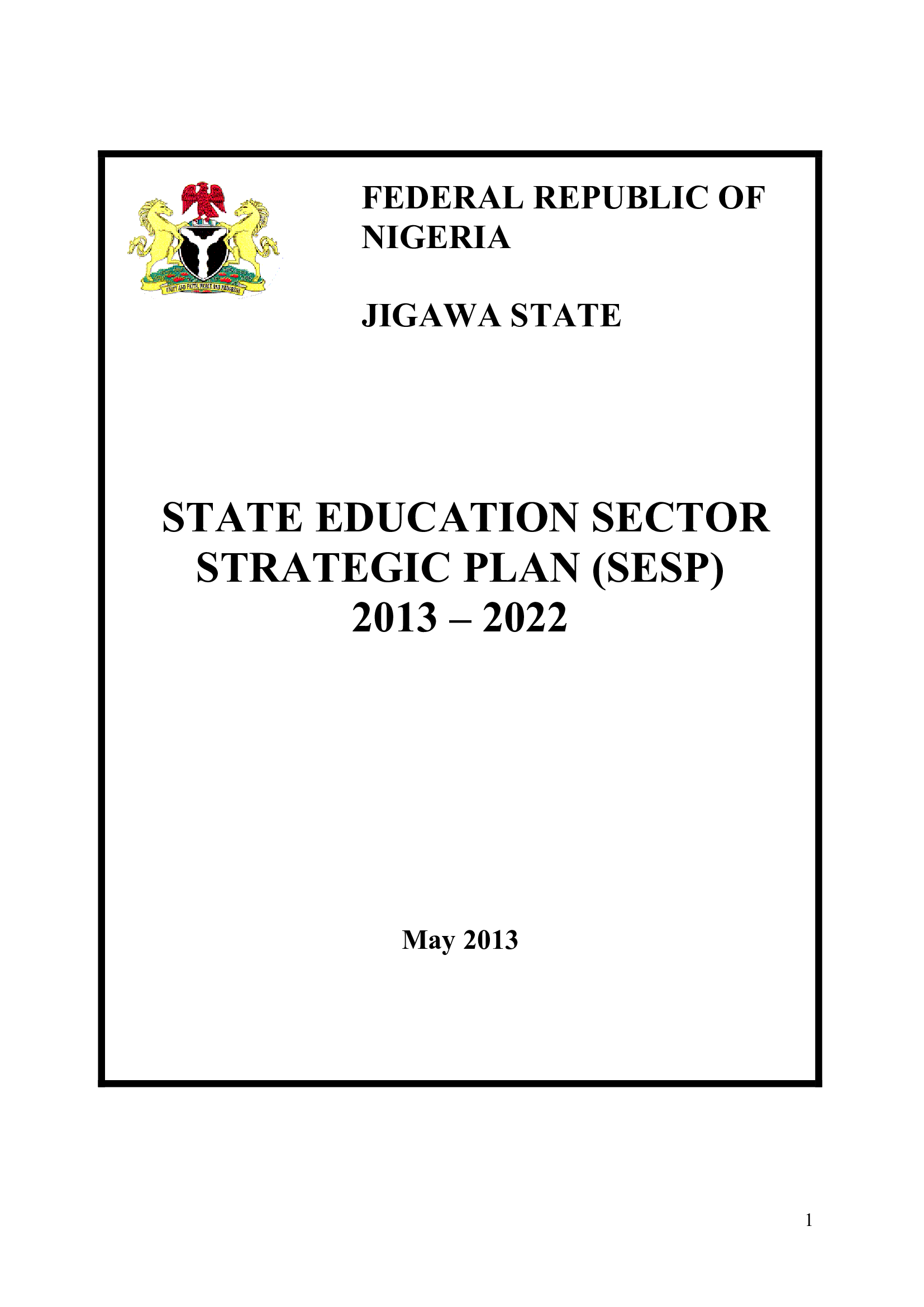Nigeria is the largest country in Africa in terms of population and has approximately 20% of the total out–of-school children population in the world. Adding to this challenge is the demographic pressure with about 11,000 newborns every day that overburdens the system capacity to deliver quality education.
In the Northern part of Nigeria, almost two-thirds of students are functionally illiterate.
The states of Jigawa, Kaduna, Katsina, Kano, and Sokoto have shown commitment to improving their education systems, but they face severe challenges including high poverty levels, low enrollment, gender disparities, poor quality and relevance, poor infrastructure and learning conditions.
An additional challenge is the direct threat to schooling, especially for girls, emanating from political insecurity through insurgent activities, and attacks on schools.
Each state created an education sector plan to outline its priorities and objectives.
Jigawa
The Education Sector Strategic Plan highlights four policy objectives:
- Improving access and expanding opportunities.
- Ensuring quality and relevance of education provision.
- Improving educational planning and management.
- Ensuring sustainable funding and improved financial management.
The education sector plan also establishes 17 clear initiatives to support these policy objectives, including establishing free education for girls at all levels and free education for all people with special needs.
Kaduna
The Education Strategic Plan 2006-2015 focuses on:
- Providing access to good quality schooling to all children of school age, attaining gender parity, and a student-teacher ratio of 40:1 per class.
- Raising the quality of education to ensure that students acquire permanent literacy, numeracy, life skills, and cognitive capacity.
- Bettering performance in both school and public examinations ensuring better progression rates and higher completion rates for all students.
- Improving planning and management of educational services and institutions to ensure effective delivery of education.
- Ensuring accountability to all stakeholders including communities, civil society organizations, and the private sector.
Kano
The Education Strategic Plan details numerous targets revolving around 5 main areas:
- Ensuring equitable access to basic education through addressing both supply and demand factors.
- Improving educational quality through reducing class sizes, increasing the availability of instructional materials, and improving teacher quality.
- Expanding technical and vocational opportunities relevant to the needs of industry and local communities.
- Gradually increasing education financing and introducing school grants to support school development.
- Ensuring that all schools have school development plans, school-based committees, and boards of governors to improve school governance.
Katsina
The Education Sector Strategic Plan emphasizes strategic policy objectives and interventions that address 5 major challenges in its education system :
- Inadequate coverage and an unsatisfactory level of access
- Poor quality and relevance
- Infrastructural insufficiency and decay
- Inefficient management and system inefficiency
- Non-sustainable funding and adequate resourcing.
The strategic interventions include increasing community participation, increasing advocacy and sensitization, improving teachers’ welfare packages, and providing teachers with re-training.
Sokoto
The Strategic Education Sector Plan prioritizes 4 policy goals :
- Improving the learning performance of pre-school children in 23 local government areas.
- Contributing to improvement in net primary school, enrollment, retention, and educational attainment.
- Providing basic education, vocational, and life skills for out of school children and women through non-formal education.
- Increasing enrollment and retention of children.
The sector plan also specifies four key areas of intervention including constructing schools, purchasing essential learning materials, providing equipment and machineries, and capacity building.


